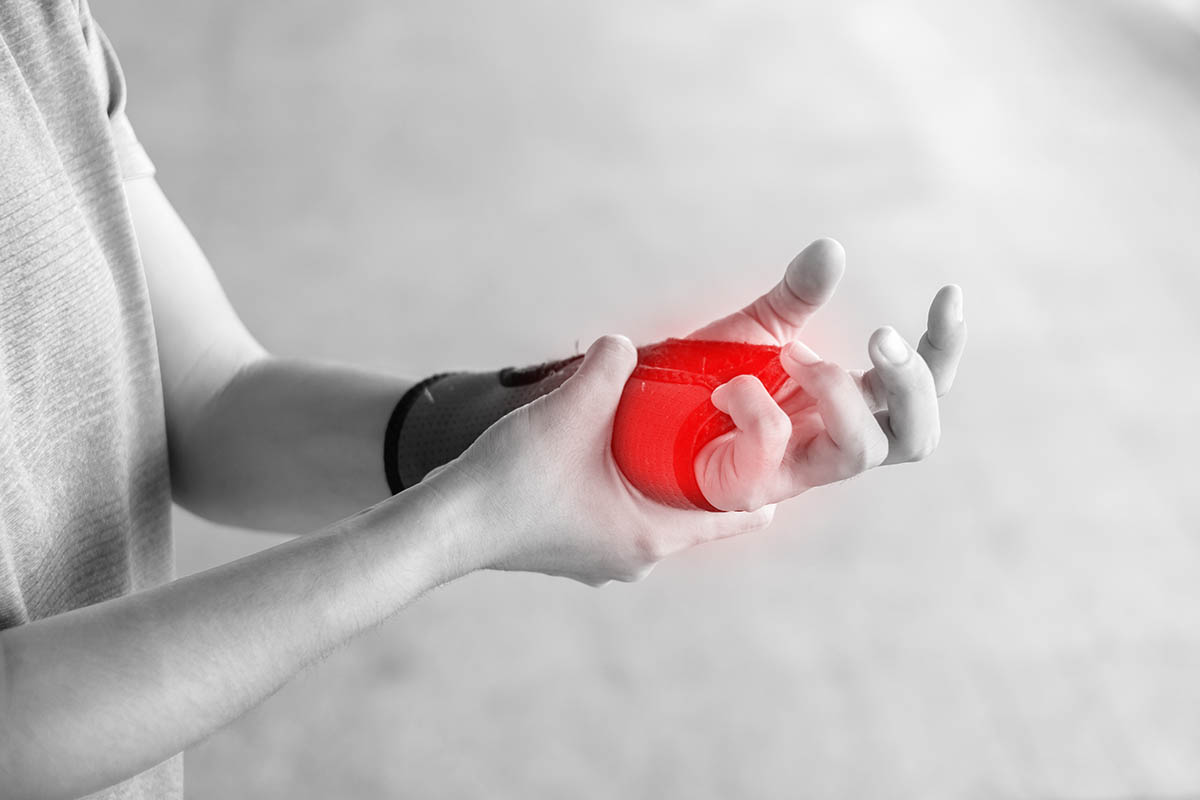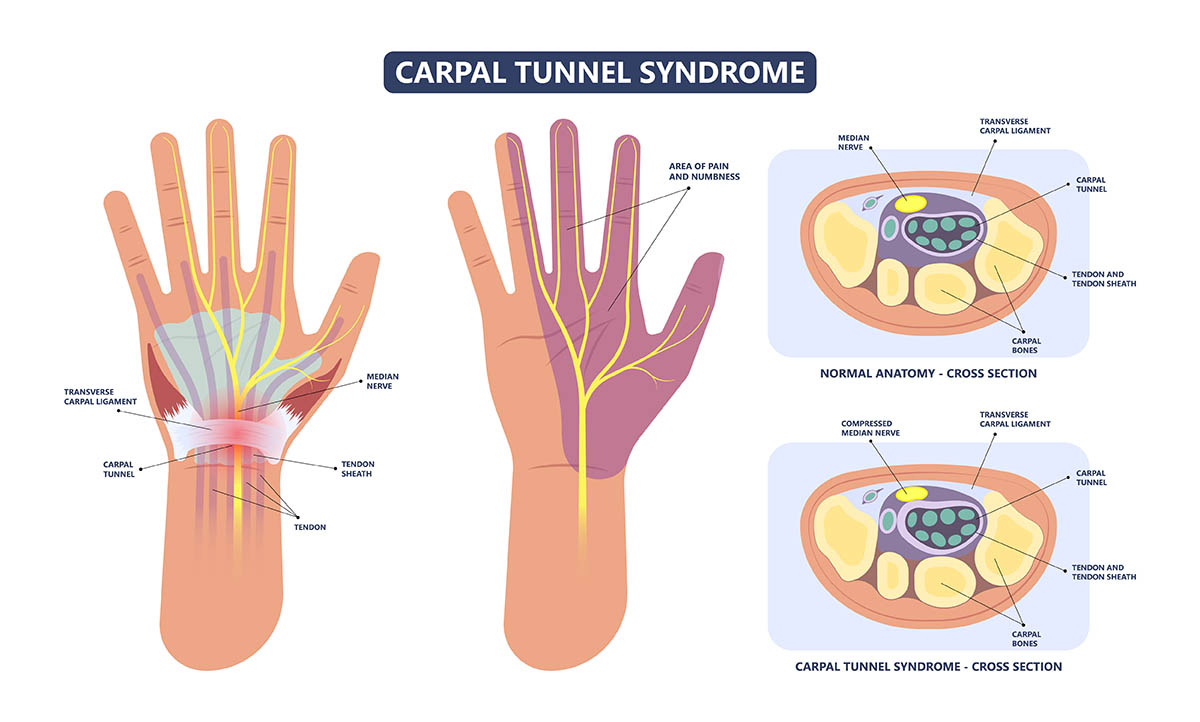What is Carpal Tunnel Syndrome?
Carpal Tunnel Syndrome (CTS) is a painful and debilitating neurological pathology of the wrist and hand that is most prevalent between the ages of 35-60. It is more common in women and has a lifetime risk of incidence of between 10-15% depending on occupation.

What is a “Carpal Tunnel” ?
To understand CTS we need to first understand the anatomy: a combination of carpal bones (wrist bones) and ligaments combine to form the tunnel. It’s purpose is protecting a nerve and nine tendons that go through the tunnel and function to allow us to perform dexterous tasks.
What causes it?
CTS is caused the combination of compression and traction mechanisms which begin with an increase in pressure in the wrist. Any swelling in and around the carpal tunnel can result in compression of the contents of the tunnel. If the nerve is compressed, it results in symptoms into the hand (specifically the lateral side of the hand – ie the thumb, index and middle fingers) such as pain, numbness or tingling. Compounding this, repetitive traction and wrist movements further disrupt the already dysfunctional environment inflaming the tendons that travel inside the tunnel also and causing further irritation to the nerve.
The most common causes of CTS include genetic predisposition, and manual jobs with repetitive hand movements, however obesity and autoimmune disorders can also contribute. CTS is also common in pregnancy due to hormonal changes resulting in fluid retention and swelling in the carpal tunnel, this often returns to normal post birth but there can sometimes be ongoing complications.
Common symptoms of Carpal Tunnel:
CTS onset is gradual with people commonly noticing tingling along the median nerve distribution (the skin of the palmar side of the index finger, thumb, middle finger, and half the ring finger, and the nail bed).

Clients often report aggravation of symptoms with tasks such as gripping the steering wheel while driving a car or holding a phone. Commonly, as the disorder progresses, the feelings of tingling and numbness can become uncomfortable and even change to a burning sensation. Finally, the nerve dysfunction can result in atrophy and weakness in the thenar (muscles of the hand/thumb), which manifests in clumsiness due to loss of grip strength.
How long does it take to recover?
CTS symptoms, once evident, are unlikely to subside on their own without management such as Physiotherapy, steroid injections, splinting and sometimes surgery. Recovery post surgery can take between 3-12 months before strength returns to the affected hand.
Physiotherapy is the best treatment.
Several recent studies have shown that acupuncture performed by a trained Physiotherapist, in conjunction with mobilization and exercise can play a pivotal role in the reduction of pain and improvement in function in people living with CTS. It is important to act as soon as possible to prevent longer term damage and dysfunction to the nerve. Your Physiotherapist will work with you to determine the course of action that will provide the best possible outcomes in reducing pain, regaining strength, and resolving the condition.











